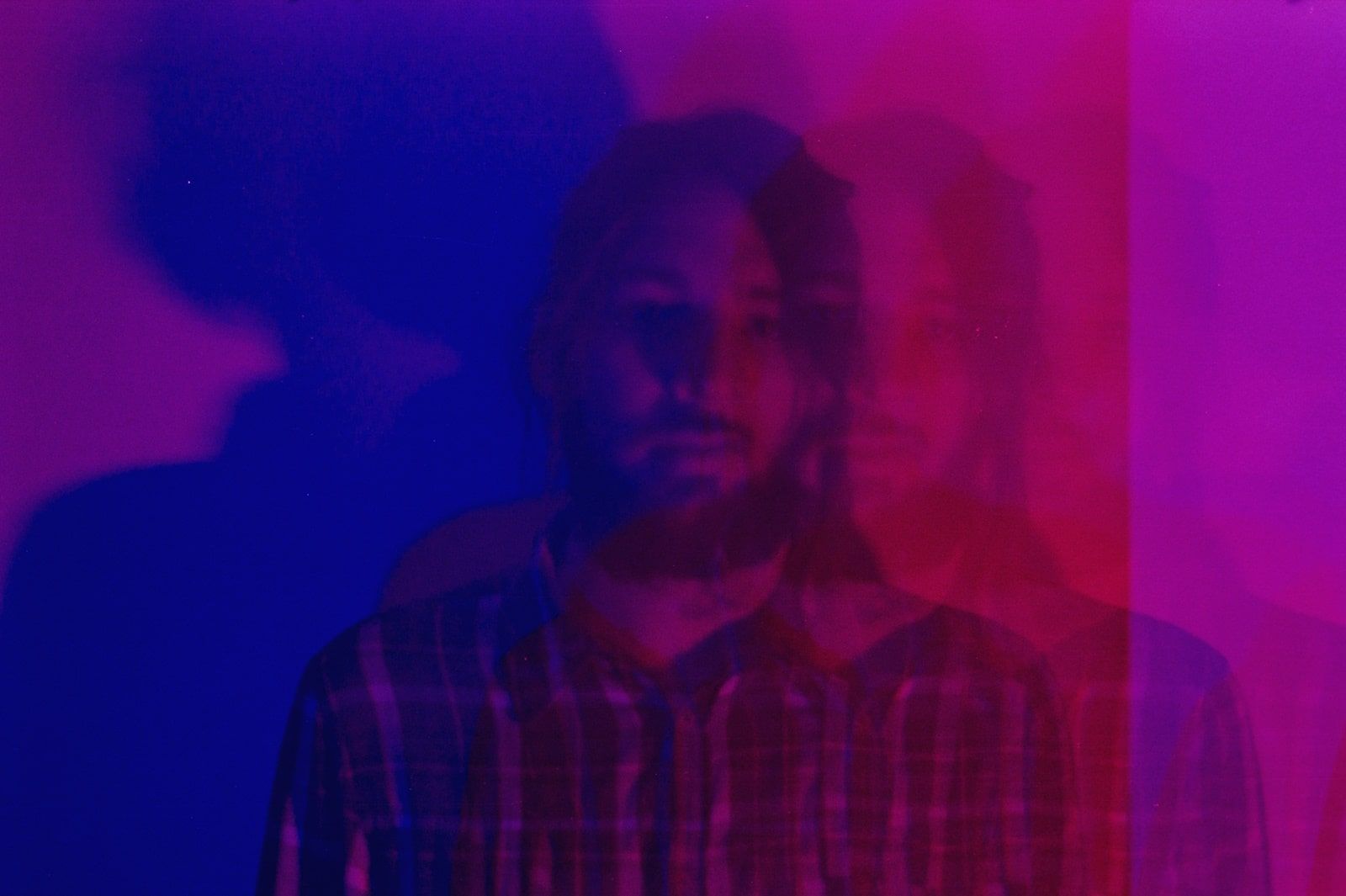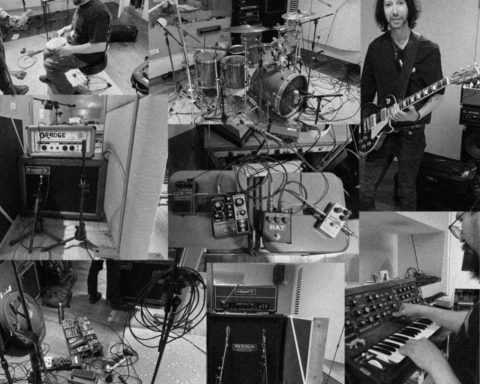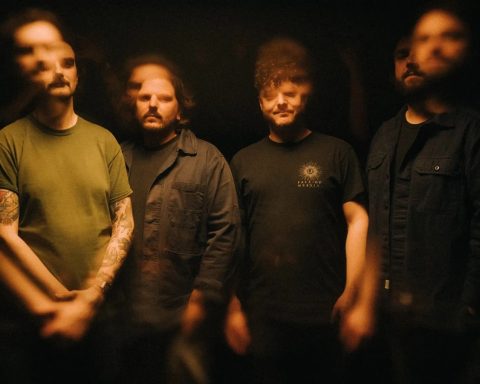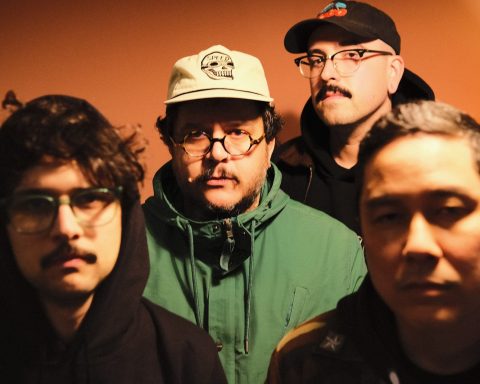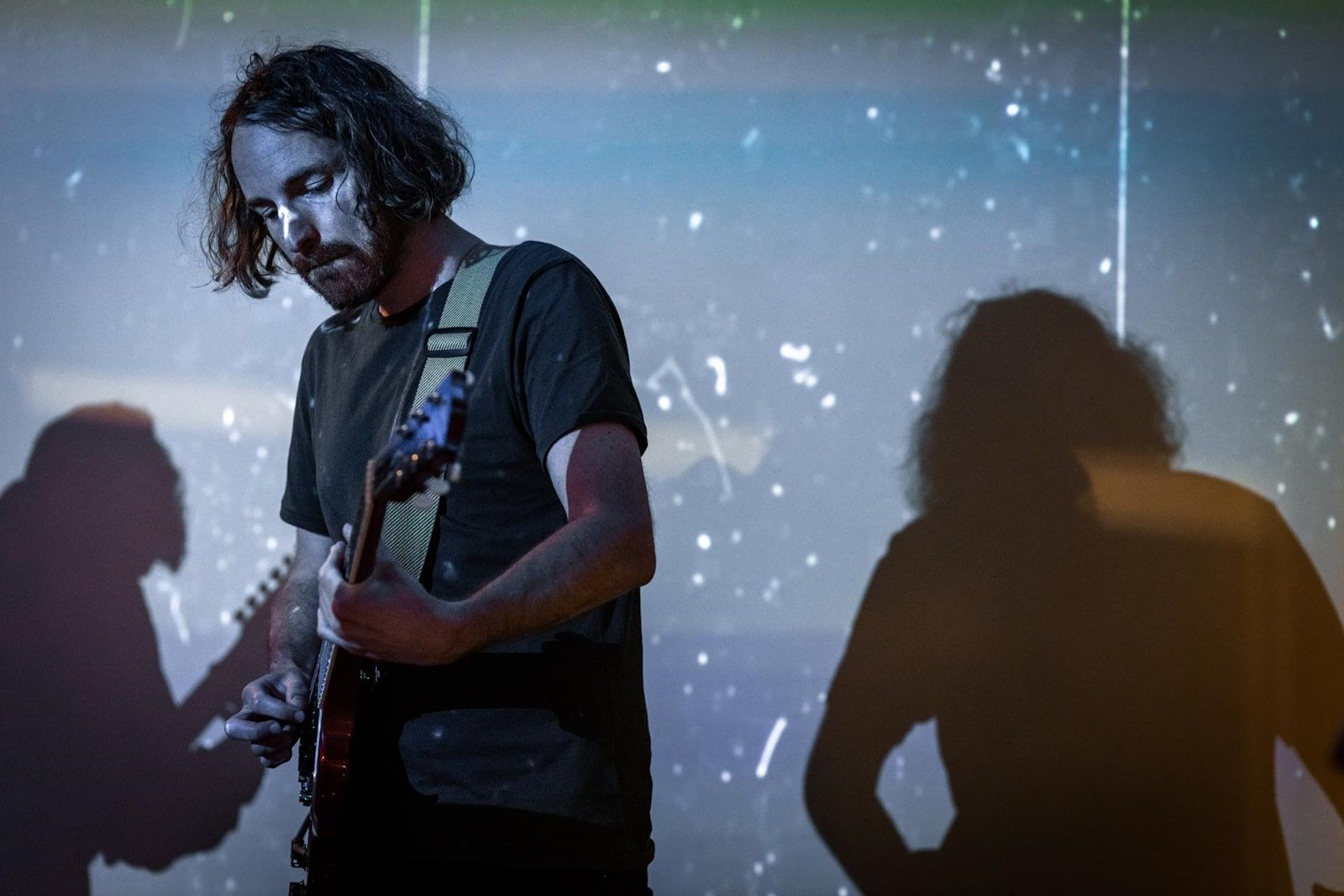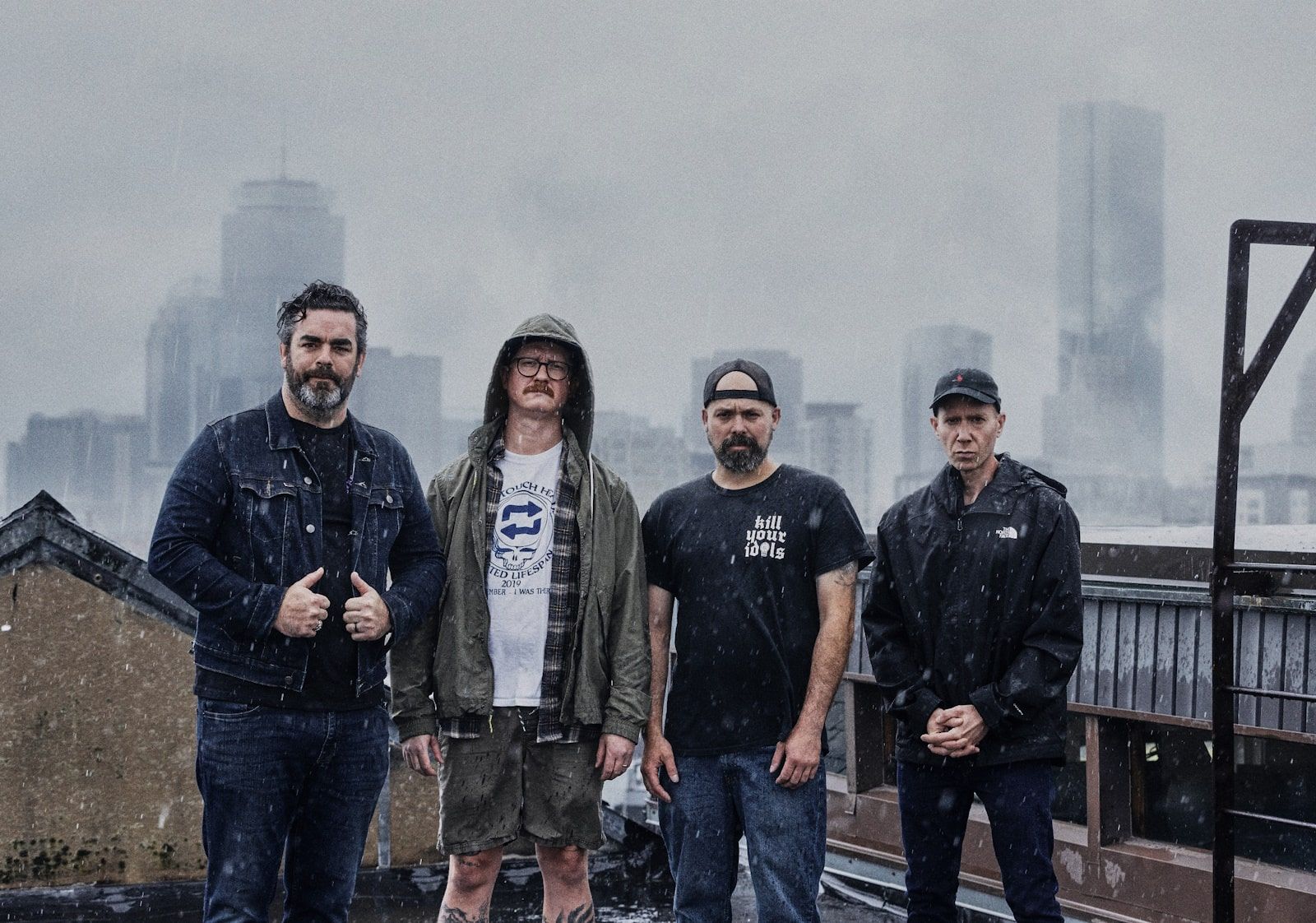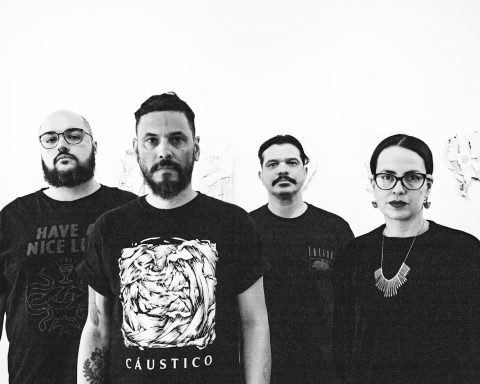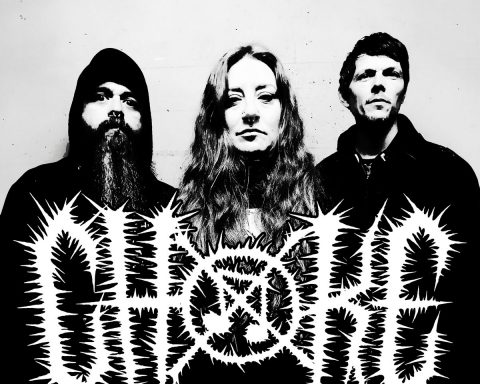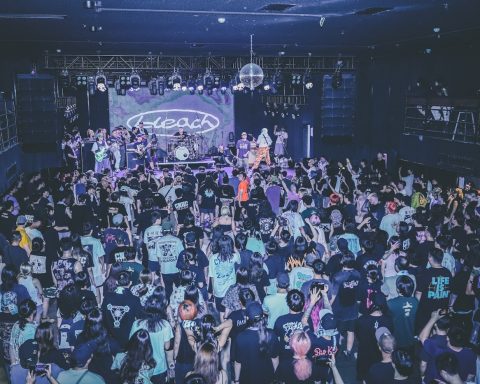Today, in the sprawling landscape of post rock, a fresh echo resonates as Animal Trees releases its latest album, “Espelho Trincado” (translated to “Broken Mirror”). The brainchild of Brazilian multi-instrumentalist composer Vitor Toledo, Animal Trees has been enchanting listeners since 2018 with its loop-based post-rock sensibilities. Building on the foundation of past EPs, “the sun/the moon” (2018) and “Reflected” (2020), this new album is a masterful blend of post-rock, experimental, alternative, and electronic genres.
Drenched in melancholy, “Espelho Trincado” is predominantly an instrumental saga, but three of its ten tracks feature vocals, marking a fresh direction for Toledo. These vocals, predominantly rendered in spoken word style, accentuate the theme of internal strife, fractured self-perception, and the blurry line between reality and dreams.
Influences are manifold. The melodic crescendos akin to Mogwai and Explosions In The Sky merge seamlessly with the experimental verve of Tortoise and the loop intricacies of El Ten Eleven.
Yet, the album carves its own niche, juxtaposing traditional post-rock instrumentation with electronic beats, synthesizers, and even unexpected elements like trap beats and carnival rhythms.
“Espelho Trincado” releases under the banners of Confusão Records and Lunar Chicken Records, it promises to leave an indelible mark on the post-rock realm.
The north american CD pressing is available to buy on the artist’s Bandcamp page.
In addition to this deep dive, check our special track-by-track commentary and an enthralling list of the Top 5 live looping performances, both delivered by the artist himself!
Top 5 live looping performances list with commentary:
1. Girlfriends – Untitled #3
Girlfriends was my introduction to live looping and it blew my mind. For those not familiar, it’s the solo project of Jerry Joiner, a multi-instrumentalist musician from Portland, USA.
I love how he builds these minimalist yet very rich small guitar loops and then goes drumming hard on top of it with some very creative rhythms, proving that a simple and catchy loop can go a long way. When I saw that, 10 plus years ago, I got obsessed with the idea of doing something similar. To this day I wasn’t able to integrate a drum kit on my live setup like he does, but I’m gonna try it for the first time on my album release show!
Also, there’s some dudes doing some weird dances on the front row – are they enjoying it or are they mocking it? We may never know!
2. El Ten Eleven – Indian Winter
El Ten Eleven is a band of two incredible musicians that are also huge inspirations to me. It always amazed me how Kristian creates these flawless loops on his double neck guitar/bass instrument and Tim manages to play drums perfectly on time on top of it, no metronome involved.
You simply can’t find a performance of El Ten Eleven where they make a mistake, and this is mindblowing considering how much room for error there is in a setup like this. I love the swap between the different parts at the end of the song through triggering and stopping the 3 loop pedals. Such a creative use of looping!
3. Mylets – Retcon
Seeing a performance from Mylets is always impressive not just for how talented he is, but also for how brave he is, clearly being very introverted but performing these complex songs by himself in front of a crowd at such a young age regardless – he started touring when he was just 17. In this one, he’s effortlessly playing these otherworldly guitar riffs while also looping, singing and controlling a bunch of pedals.
The part at 2:18 shows how much control he has over those pedals, and the solo at 2:56 is simply amazing, it’s incredible how clean he plays that.
4. Battles – Atlas
I don’t think there’s a band both so organic and electronic at the same time as Battles, and this performance proves it. They truly mastered the technique of recording and manipulating sounds in real time. I especially love that last part of the song where they are playing with these weird glitched loops, there’s something so cool about a chopped up loop that you don’t even know how it was created. I also love how excited people are, screaming and jumping to this weird song!
5. Nick Reinhart – Smile / Improvisation / Jon Brion “Piano One”
Nick is most famous for playing in the amazing math rock band Tera Melos, but I love this solo live looping performance of his!
He comes out like a creature from another planet with that weird mask and starts messing with this smiley face theremin, like some sort of extraterrestrial dialogue. Then he starts playing and looping a bunch of random notes and sounds. This whole messy and chaotic start makes it sound extra good when he transitions to that electronic Aphex Twin-ish part at 4:05 where he plays a synth in his guitar while also making a drum beat with one foot and triggering a weird loop with the other. And the transition from the chaotic electronic sounds to a version of “Piano One” from Jon Brion towards the end gives me goosebumps.
No one can make a guitar sound like anything else but a guitar like Nick does.
“Espelho Trincado” Track by track commentary:
1. Lapso (“Lapse” in English)
This track serves as an intro to the album, and I think it sounds like an awakening, at the same time that it conveys a feeling of imprecision between reality and dream, like the moment when you’re waking up and don’t know if you’re already awake or if you’re still dreaming, which relates to the title of the track.
2. Da janela (“From the window” in English)
Like many songs on the album, this track begins with a short guitar loop that gains a new meaning and expression when the bass begins playing. This technique, very much derived from the loop-based composition process, ends up becoming a thematic aspect of cohesion of the album, I think. When I first wrote this song, I thought it sounded a bit like Tortoise – which were a big influence for me on this record – but with an unexpected trap beat on the first part hahaha
3. Drenado (“Drained” in English)
This is my first song to feature vocals – up until this point, all songs I released were instrumental – and probably the first song written on the album. The lyrics talk about the unstoppable formatting imposed by capitalism on our ways of life, limiting the human experience to something apathetic, artificial and distant, where producing information is the only thing that matters. In terms of sound, I think this one is more on the weirder side, with an unstable 7/8 electronic groove and displaced guitar notes.

4. Esse espelho não reflete minha imagem (“This mirror doesn’t reflect my image” in English)
This one establishes the melancholic atmosphere that predominates throughout most of the album. I think it’s interesting how a floaty and melodic guitar duet suddenly gets dark when the bass enters. Lyrically, this song has a very introspective approach, with themes of internal conflict and distorted self-images. The weird distorted loop at the end is the original voice note I recorded on my phone when I was writing this song – I was never able to precisely recreate that sound after.
5. Não há vitória quando o inimigo está dentro (“There is no victory when the enemy is inside” in English)
I think this track is perhaps the most melancholic on the album. It was written in a moment of feeling defeated by myself. I used to see it as a less important track, but it’s one of the songs people are most interested in when I play it live, and since then I changed my perspective on this track quite a bit. Also, the distorted guitar at the climax wasn’t originally written: I started playing that part live as a way to adapt the song to the live looping setup I use, but ended up liking it and recording for the final version.
6. Desfigura (“Desfigure” in English)
This song almost didn’t make it to the album, but it’s probably my favorite track on the record. It was the hardest to finish and went through a lot of versions. I had this first part with the dream-like guitar duet that reminded me of Pretend and the soft spoken vocals (subconsciously inspired by Slint) but didn’t know where to go from there, and I love how it turned out. I really like 90s screamo, and I think the screamed vocals kinda pay homage to it – it was the first time in my life I screamed at the top of my lungs. The lyrics address a feeling of confusion between reality and fiction, like a surrealist dream in which you see your own melted face and try to understand what is happening. Then there’s the second part, much more electronic and hopeful, that I just felt it was needed after an intense catharsis like that. The sample in there is from the Brazilian version of SpongeBob SquarePants hahahah I don’t know why exactly, but I felt it needed a nostalgic and playful cartoon ambience that also kinda related to the lyrics.
7. A palavra ‘distância’ nunca doeu tanto (“The word ‘distance’ never hurt so much” in English)
This is a simpler song, providing a breathing time while also maintaining the melancholic theme of the record. It’s a loop repeating throughout the whole track, on top of which the drums explore some rhythms, and at the end there’s an ethereal guitar that takes over the loop.
8. Primavera tardia (“Late spring” in English)
This is the most upbeat and danceable song on the album, which brings a glimpse of hope before the final act. I think it kinda sounds like an El Ten Eleven track – they are one of my biggest inspirations both in terms of composition and performance. It has an 80s feel with the sequenced drums and the guitars with chorus effect.
9. A colisão (“The collision” in English)
Perhaps the strangest song on the album. Starts with a weird harmonized guitar loop, then a duet of xylophones is presented, inspired by Tortoise on “TNT”, making it more melodic, and then it goes to an electronic approach, with the minimalist drum beat. The second part of the song is more post-rockish, while also being twisted by a snare drum juxtaposition that resembles a Brazilian carnival march. Then there’s a pause before one final cathartic ending. When the song hits again, to me it feels like a fist colliding against the mirror that was hauntingly present during the entire album – hence the song title. This last moment repeats itself indefinitely, slowly disappearing in a fade out.
10. A imagem nos estilhaços (“The image in the shards” in English)
I consider this to be a part 2 of “A colisão”, like the outcome of the previous cathartic development. It establishes that introspective feel again, with a slow piano driven electronic loop, over which the guitar plays a melancholic and repetitive melody. The mirror is broken and all that is left is the image reflected on the shards. It feels like a “what have I done” moment. The loop is abruptly interrupted with the sound of a door closing.



